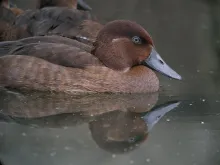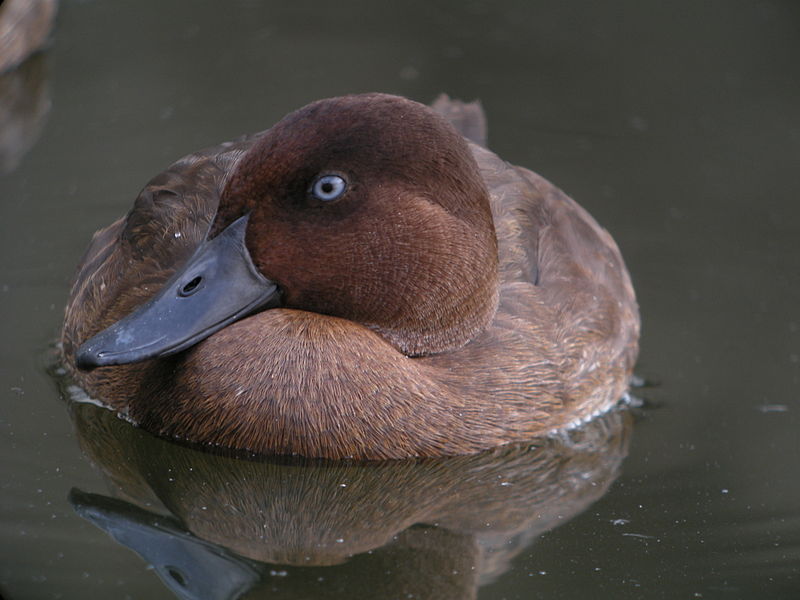
Madagascar Pochard (Aythya innotata)
Species name
- Dutch name:
- Madagascar witoogeend
- English name:
- Madagascar Pochard
- German name:
- Madagaskar-Moorente
- French name:
- Fuligule de Madagascar
- Scientific name:
- Aythya innotata
Scientific classification
- Order:
- Anseriformes
- Family:
- Anatidae
- Onderfamilie:
- Aythyinae
- Genus:
- Aythya
Description
- Description:
Male:
Dark chestnut-brown head and neck, with purplish tinge. Breast dark chestnut; Flanks Reddish- Brown, grading into whitish belly; vent darker brown, forming band separating belly from white undertail- coverts. Upperparts and tail dark brown to blackish, unmarked. Wings with a conspicuous light white wing-bar along bases of flight feathers. Bill is dull brown with paler, bluish subterminal band. Iris White.Female:
Is duller brownish, lacking white-eye. overall dark Brown plumage and white under tail-coverts and wing-bar extending length of the wing.Juvenile:
Juvenile as female but paler brown on head and body.
Standard Measurements
- Body Length (cm):
- The male (drake) of the Madagascar Pochard measures approximately 42-56 centimeters. The female measures approximately 42-56 centimeters.
- Body Weight (grams):
- The male will weight about 545-635 gram. The female will weight about 545-635 gram.
The weight is notoriously variable and can only be used as indication!
- Note:
Madagascar pochards are diving ducks which spend most of their time on water, and are ungainly on land. They are generally hardy, sociable and easy to maintain in captivity. They should be kept with deep water available for diving, three to seven feet suggested, or at least half the area 60cm and preferably one metre deep, with shallow sloping banks for easy exit from the water, also islands, good marginal vegetation and loafing areas. Water providing a good supply of natural animal and vegetable food is preferred.
These ducks may be kept in mixed collections with dabbling ducks, including smaller species such as teal. They should be fed wheat in water, encouraging their natural diving behaviour. Pellets should also be fed. They may breed better if a group rather than single pair kept, as this allows their normal group displaying activity.
30x30x35cm nest box with 12.5cm entrance hole suggested, placed under cover at the edge of the pond.
Madagascar pochard have very rarely been bred. They may nest in close ground cover or possibly ground-level nest boxes. Probably lay eggs April to June (B29).
Fertile hybrids reported with Ferruginous pochard (Aythya nyroca).
- Breeding:
- The female Madagascar Pochard usually lays from 7-10 creamy white and not shiny eggs and incubates them for 25-28 days.
- Artificial incubating:
The ideal relative humidity for incubating most waterfowl eggs is 55% (ground nesters) and 40% (cavity nesters). The temperature is usually 37.4°C. Set ventilation as recommended by the incubator manufacturer. Eggs must be turned, either automatically or by hand, a minimum of 4 times a day. As the duckling develops there is a loss of water from the egg and the air sac gets bigger. In normal development of an egg with a 25-28 days incubation, the air sac occupies about a third of it three days earlier. Cleanliness is vital and ideally eggs should be moved to a separate hatcher at this point, where the humidity should be increased to 65% and even higher once they have pipped internally.
- Bird banding:
- Recommended closed leg band ring size for the Madagascar Pochard is 11 mm.The leg band ring can only be applied on a young diving duck at around 12 days old.
- It doesn't matter what leg that you band, but it's good to have a consistent system. Suggested: Left leg = Female, Right leg = Male
- Rearingfeed:
-
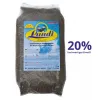
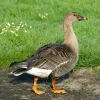

Floatable special rearing feed for all types of aquatic ornamental fowl - especially for the cultivation of trees as well as greening ducks.
This well-balanced complete feed with 20% protein content convinces above all by its good compatibility and forms the basis for visibly healthy growth from day one.
Made exclusively from wholesome and selected raw materials, Lundi Micro Regular is also ideally suited for the year-round feeding of waterfowl.
- Maintenance food:
-



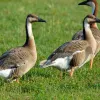

Lundi Regular with a protein content of 20%, valuable Spirulina and high-quality by-products is optimally balanced in its composition maintenance food for water ornamental fowl of all kinds. Especially green teal and Whistling ducks that are not dependent on a very high protein content, are well supplied.
Lundi Regular contains all the minerals and vitamins in full form that are important for the animals. Therefore also suitable as breeding food.


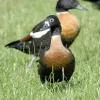


Floating full food for all sea ducks, green ducks, eider ducks and geese, especially in the moulting and breeding phase ideally suited. Packed with wholesome raw materials, natural vitamins and trace elements, this performance food with a protein content of 30% forms the basis for lifelong vitality.
- Regulation:
- CITES bijlage A
- Regulation:
Deze soorten dienen altijd vergezeld te gaan van een CITES-document. Hierop staat o.a. de geboortedatum, de soortnaam, het geslacht en andere informatie zoals het ringnummer en de diameter van de ring die relevant zijn om het dier te identificeren. Dit internationale paspoort moet altijd bij het dier blijven, waar het ook heengaat.Houders van CITES A soorten dienen een register(boekhouding) bij te houden waarin men o.a. noteert het nummer van het CITES-document, soortnaam, de datum van aankoop en eventuele latere verkoop, verkregen jonge dieren en de datum van overlijden. Een voorbeeld van dit register is te downloaden via www.cites.org.Bij het verkrijgen van nakweek uit CITES A vogels dienen deze geringd te worden met een erkende, geregistreerde ring met een vaststaande diameter. Zolang de nakweek vogels in uw bezit blijven, op het adres dat gelijk is aan dat waar de oudervogels zich bevinden, is een CITES-document voor hen nog niet noodzakelijk.Zodra u de nakweek wilt overdoen aan een andere eigenaar dient u voor de vogels een CITES document aan te vragen. Dit gaat op basis van de CITES documenten van de beide oudervogels. Als de CITES-documenten in uw bezit zijn mag de nakweek uw adres verlaten, NIET eerder! In uw registratie noteert u dan waar de betrokken dieren heengaan.
